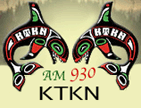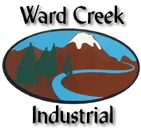 By DOUG O'HARRA Anchorage Daily News December 29, 2005
This meltdown forecast comes amid other signals that Arctic climate has been changing fast: shrinking sea ice cover, warmer temperatures and shifting vegetation.
A new federal study released applied one of the most sophisticated supercomputer climate models ever developed to the future of permafrost. The results were startling. Under the most extreme scenario, global warming could thaw the top 11 feet of permafrost near the ground surface in most areas of the Northern Hemisphere by 2100, altering ecosystems across Alaska, Canada and Russia on a scale unseen for thousands of years. And then it gets worse. Methane and carbon dioxide gas could ooze from the soggy dirt and peat, triggering even faster warming. "If that much near-surface permafrost thaws, it could release considerable amounts of greenhouse gases into the atmosphere, and that could amplify global warming," said lead author David Lawrence, with the National Center for Atmospheric Research. "We could be underestimating the rate of global temperature increase. "I think this is another piece of evidence that says we should be considering actions" to reduce emissions of greenhouse gases, Lawrence said. But a leading permafrost researcher at the University of Alaska Fairbanks disagrees that the thaw could be so large. Alaska's permafrost won't melt that deep or that fast, said Vladimir Romanovsky, who monitors the world's most extensive network of permafrost observatories for the Geophysical Institute. If air temperatures increase 2 to 4 degrees over the next century, permafrost will definitely begin thawing south of the Brooks Range and start degrading in some places on Alaska's Arctic slope, he said. But a prediction that melting will reach 10 to 11 feet deep over the entire region goes too far, he said. The computer climate model didn't take into account some natural factors that tend to keep the permafrost cold, Romanovsky said. Deeper permafrost, largely untouched by recent warming at the surface, will have an influence, for instance. Lawrence said he hopes to collaborate with Romanovsky to fine-tune future work-ups to deal with those deeper layers. "We'd be excited to work with Vladimir or other scientists like him to improve our modeling," he said.
Publish A Letter on SitNews Read Letters/Opinions Submit A Letter to the Editor
|
||


